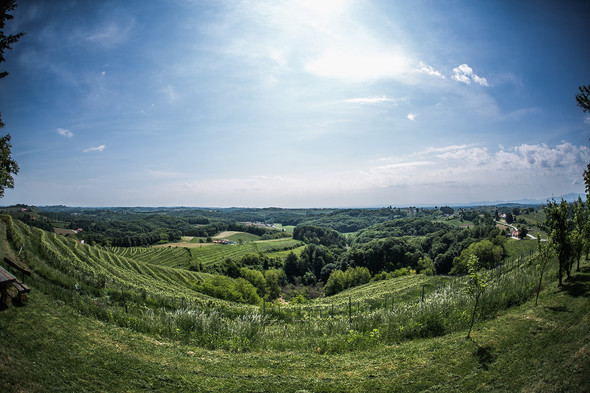‘C’est bon!’ declared the Napoleonic soldiers about the local wine as they passed through what would become Slovenia. They were praising Furmint, which is how, with a slight twist in pronunciation, it got its Slovenian name, Šipon.
‘We continue on a path laid out for us by our ancestors nearly two centuries ago. Their achievements are an incentive to seize the opportunity of modern Europe and look into a common future with confidence’, states Gerhard Conrad Fürst, descendent of a family of Bavarian wine merchants who settled in Putj in Slovenia in the nineteenth century and ran their business successfully until being expelled in 1945.
The family regained its vineyards and family home in 2006 after 13 years of official proceedings and is now producing wine again. Conrad recruited the help of Alois Gross, the internationally renowned winemaker considered to be the pioneer of the South Styrian wine miracle, and in 2007 Conrad Fürst and Söhne came into being.
The first harvest in 2010 yielded small quantities of Šipon and Sauvignon Blanc, from which they produced a rather unusual blend, ‘Pod Stolpom’ (under the tower), combining the aromas of Sauvignon Blanc with the fine fruit and acidity of Šipon. It was clearly a success, as they have made a second edition of it.
Their main focus is on Šipon and exploring its potential, only one of five wineries to do so in the area, already achieving success in Vienna, where Austrian, Slovenian and Hungarian Furmints were pitched against each other. As yet, though, there is no clear style for Šipon in Slovenia. They do face a few challenges, says Conrad: ‘Slovenia is not known as wine country, Šipon is not known as a variety and the company is not known as a brand; but beyond these three difficulties, everything is perfect’. The vineyards’ location is certainly perfect, lying in Haloze and Jeruzalem, often referred to as the ‘pearls’ of Slovenia. The area is famous for its vertical terraces, changed during Socialism to allow access for tractors. They are now reinstating the narrow terraces.
Their key markets are private customers abroad, mainly in Austria at the moment, as it is difficult to sell their wine in Slovenia itself; in the south, people tend to more to sweet wine, and traditionally here Šipon is mixed with water to produce Furmint Šipon.
From the winery, Slovenia, Croatia, Austria and Hungary spread out in front of you. You can see the Alps, a hundred miles away, and it is said that you can also see the Balaton, although maybe after a glass too many of Šipon. Perhaps you can also see across to the family’s old vineyards in Villány, Hungary. This is a good spot then to ponder the common future of a borderless Europe, glass of Furmint Šipon in hand.






